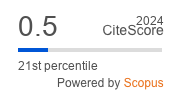Risk factors for progressive atopic dermatitis in children
Abstract
The article presents the research data on risk factors for progressive AD in children and adolescents. The study enrolled 350 children and adolescents aged 1 month to 18 years with AD of varying severity. The average SCORAD index equal to 20,2±2,8 was regarded as mild, 48,7±2,8 — as moderate and 78,5±3,8 — as severe AD. It has been established that AD is more likely to develop into a severe form if the child has a hereditary allergy history, especcially if allergic diseases can be traced through the maternal line and/or one of the proband’s closest relatives suff ers from AD. Another adverse prognostic criterion for severe AD progression is its early onset, at the age of 3 months and earlier, especially if the desease aquires a severe form from the very beggining. The child’s living conditions also make for developing severe AD forms. There can be traced no diff erences in the levels of total IgE in patients with various AD who have a hereditary allergy history and the others who have not such a heriditary component. The total IgE level is signifi cantly higher in severe forms (р<0,001). In severe AD the frequency of sensitization to the main groups of food and inhalant allergens increases with aging as compared to patients with moderate AD.
About the Authors
A. V. KudryavtsevaRussian Federation
Asya Valerievna Kudryavtseva, MD, leading researcher of the Department of researches in pediatrics of the Research Centre
1–3/19 B. Pirogovskaya str., Moscow, 119991
8 (909) 992–64–32
T. N. Korotkova
Russian Federation
Moscow
References
1. Allergic diseases in children / Ed. by prof. M.Ya. Studenikin, prof. T.S. Sokolova. M.: Medicina. 1986. 287 p.
2. Ivanov N.R ., Gorchakov L.G., Astafi eva N.G. The prevalence of allergic diseases in children and some questions of the organization of specialized care // Pediatriya. 1979; 11: 47–48.
3. Gapeev S.I., Mushketov A.V., Surkov V.D. et al. On the question of the prevalence of allergic diseases among organized detey // Tezisy vsesoyuznoj konferencii "Allergic diseases in children". Makhachkala. 1991: 13.
4. Novak N., Bieber T. Allergic and nonallergic forms of atopic dermatitis // J Allergy Clin Immunol. 2003; 112(2): 252-262.
5. Flohr C., Mann J. New insights into the epidemiology of childhood atopic dermatitis // Allergy 2013; 69 (1): 3–16.
6. Macharadze D.Sh., Tarasova S.V. Dynamics of prevalence of symptoms of allergic diseases according to ISAAC (in 1997 and 2000 years, M.) // Allergologiya i immunologiya. 2002; 3: 300–302.
7. Balabolkin I.I., Grebenyuk V.N. Atopic dermatitis in children. M.: Medicina. 1999. 240 p.
8. Balabolkin I.I., Sadikova T.E. The clinical and immunological variants of atopic dermatitis in children and adolescents and the eff ectiveness of pathogenetic therapy // Pediatriya. Zhurnal im. G.N. Speranskogo. 2013; 3: 6–13.
9. Kerschenlohr K., Decard S., Darsow U. et al. Clinical and immunologic reactivity to aeroallergens in «intrinsic» atopic dermatitis patients // J. Allergy Clin. Immunol. 2003; 111: 195–197.
10. Bardana E.J. Immunoglobulin E (IgE) and non-IgE-mediated reactions in the pathogenesis of atopic eczema/dermatitis syndrome (AEDS) // Allergy. 2004; 59(78): 25–29.






































